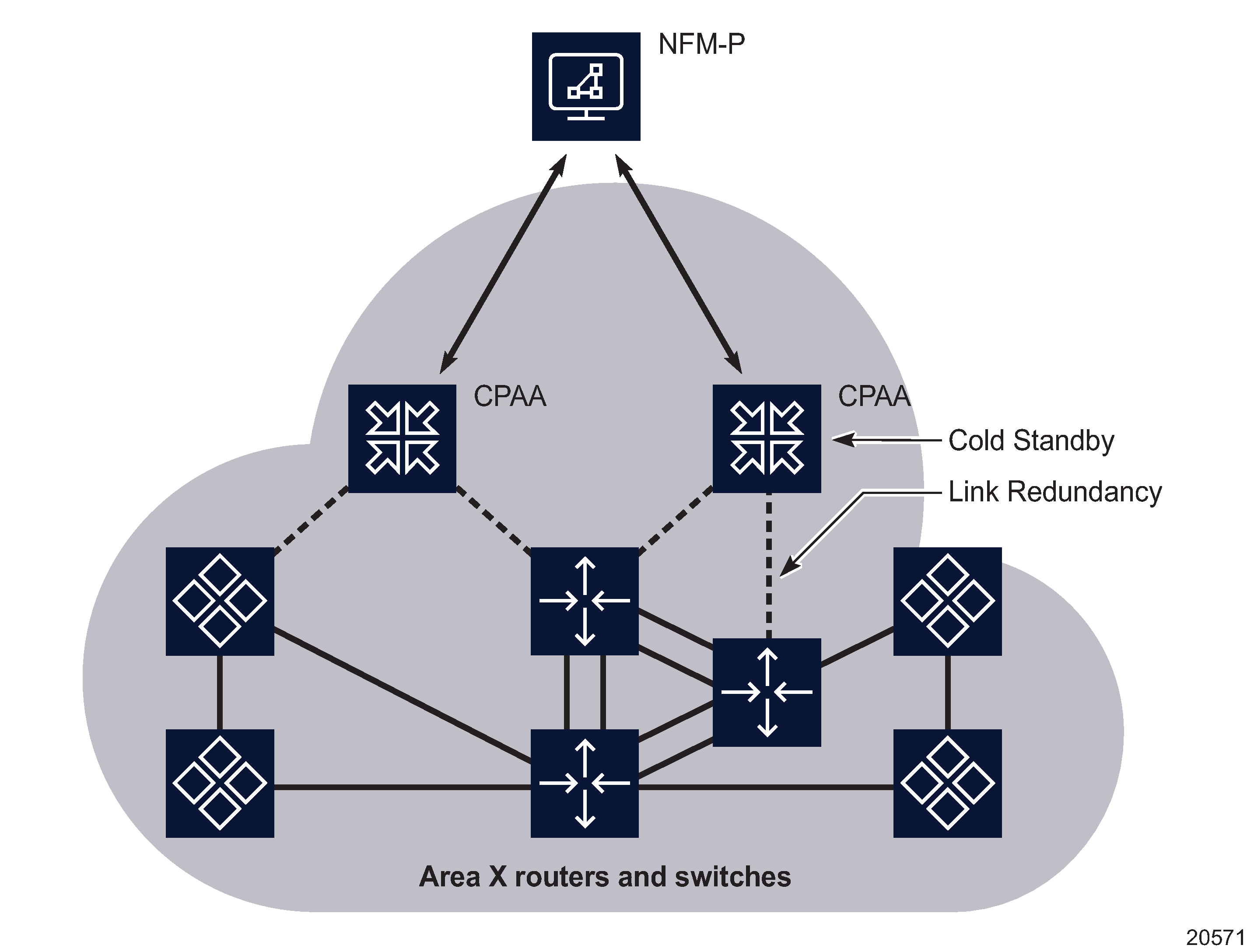CPAA Redundancy overview
Introduction
You can use the NFM-P to create a cold standby CPAA for ISIS and OSPF protocols. In a redundant configuration, each CPAA must have exactly the same peering configuration within the network. For example, when the CPAA 10.1.1.7/32 peers in 0.0.0.0, 0.0.1.0 and 0.0.2.0 OSPF areas, the CPAA 10.1.7.6/32 needs the same peering arrangements to be a standby for CPAA 10.1.1.7/32.
The following figure shows CPAA redundancy:
Figure 6-1: CPAA redundancy

CPAA switchover
The NFM-P supports a manual switchover, initiated by the user. The OSS developers can use the XML API interface to create XML scripts to automate this manual switchover. The CPAAs are pre-configured in a redundancy pair (the pair must have visibility of the same OSPF areas, ISIS routing domains and BGP AS). The alarm configuration, BGP prefix monitor, IGP shortcuts and IP paths are automatically distributed to the newly active CPAA. Note that the BGP routing change statistics must be configured on both CPAAs.
For redundant CPAAs, the deployment rules described in CPAA redundancy workflow must be followed to correctly back up one another. Because the NFM-P does not support two active CPAAs in the same IGP administrative domain, the standby CPAA must be administratively down and IGP administrative domains must not be configured.
© 2022 Nokia. Nokia Confidential Information
Use subject to agreed restrictions on disclosure and use.